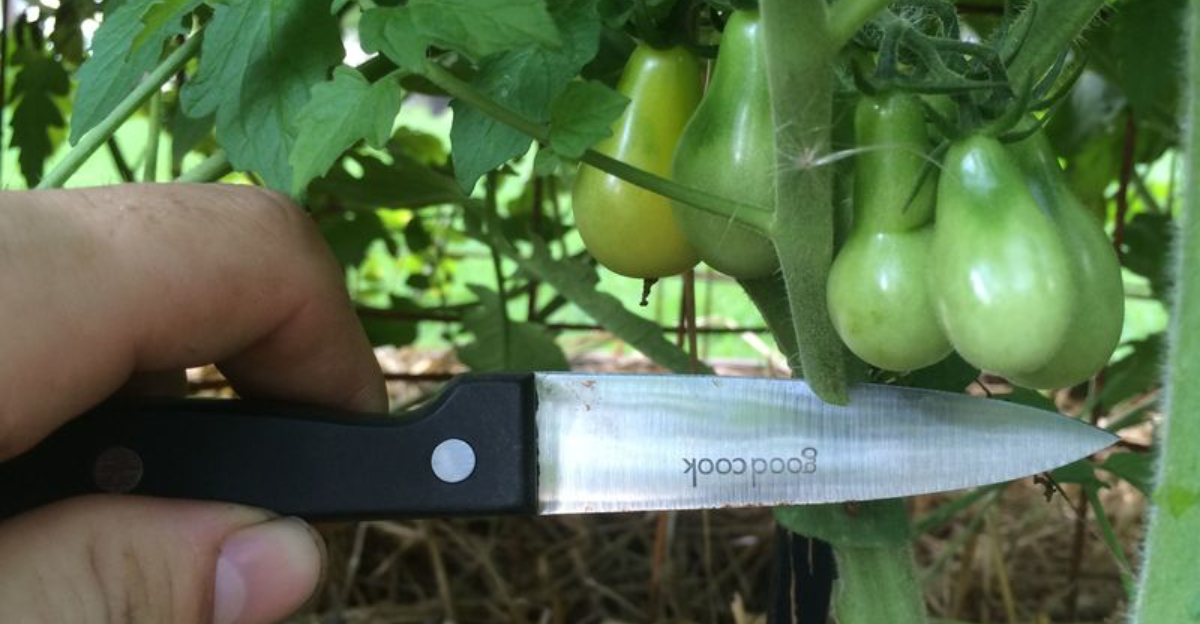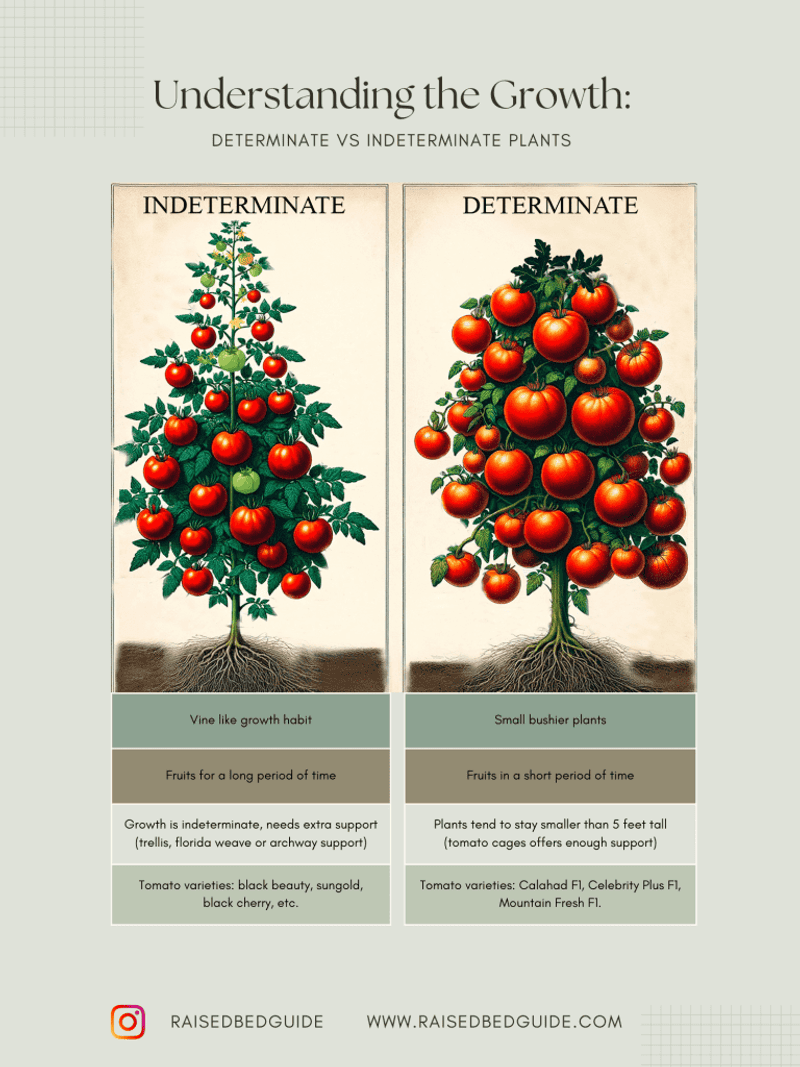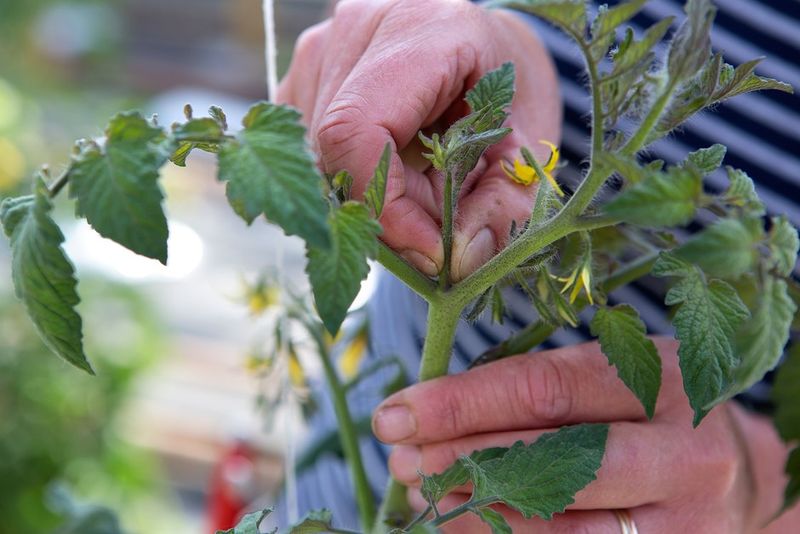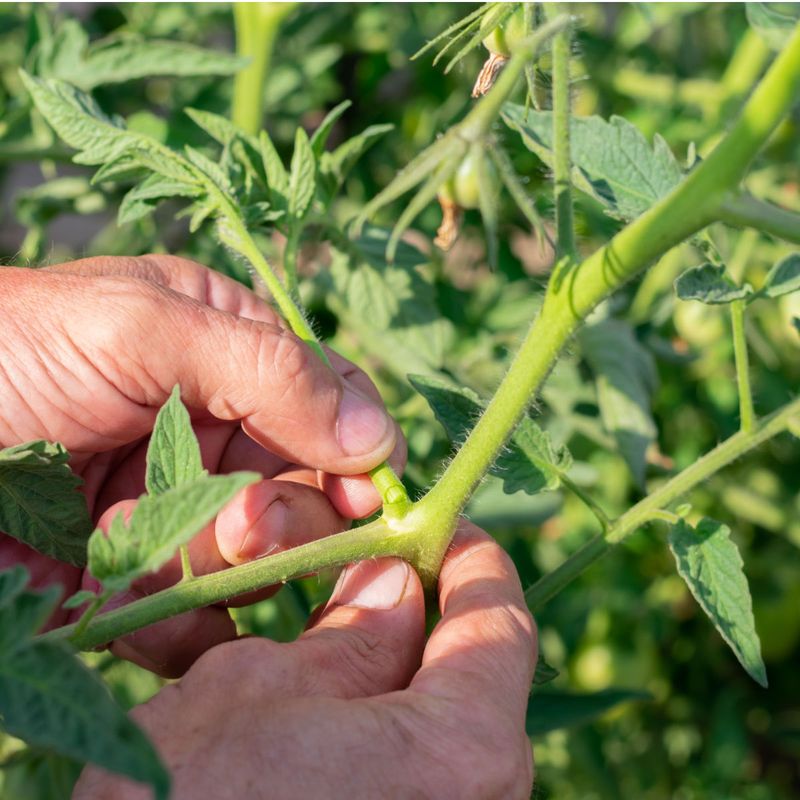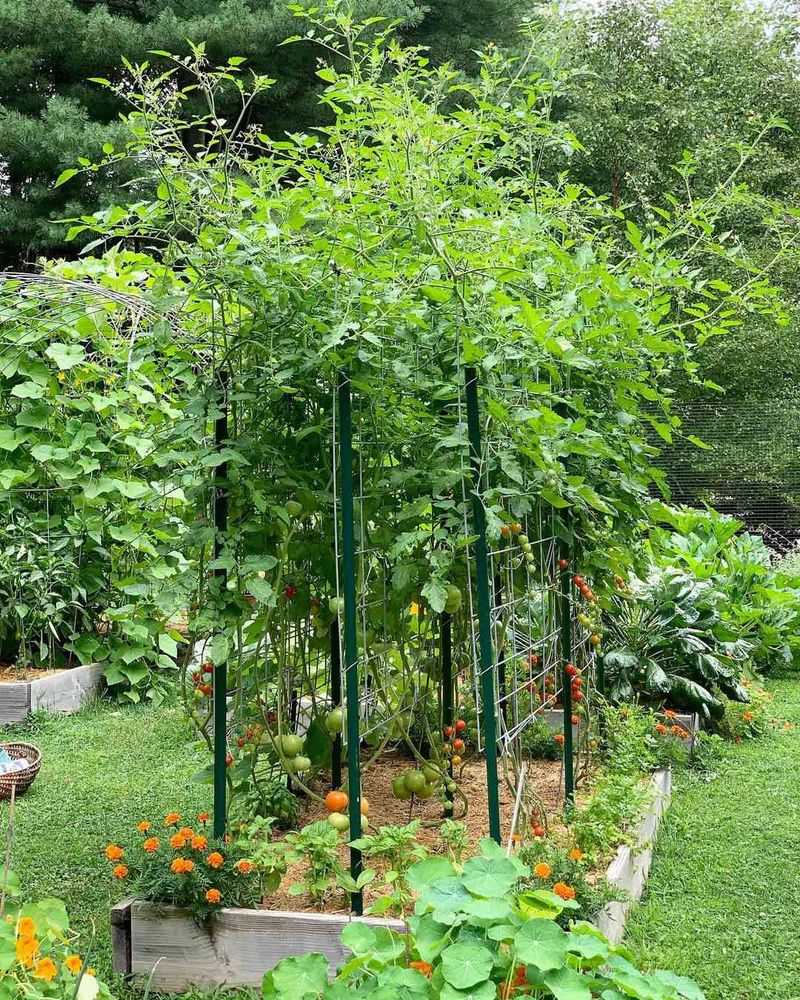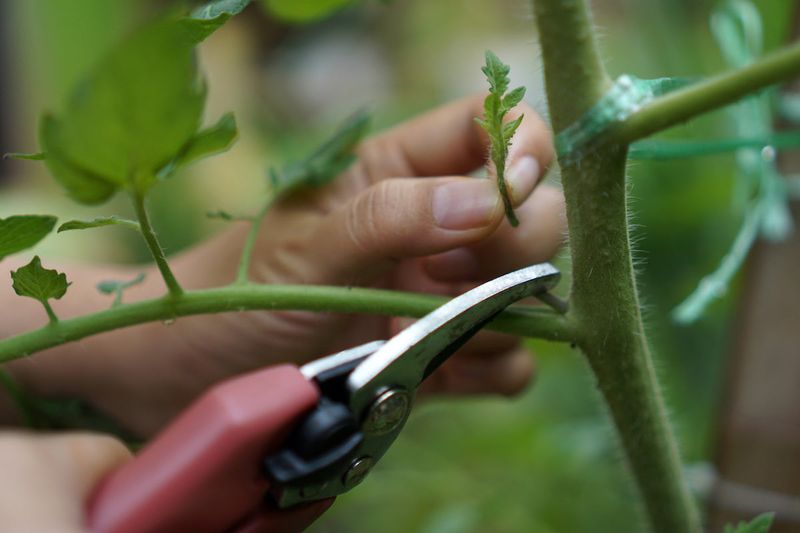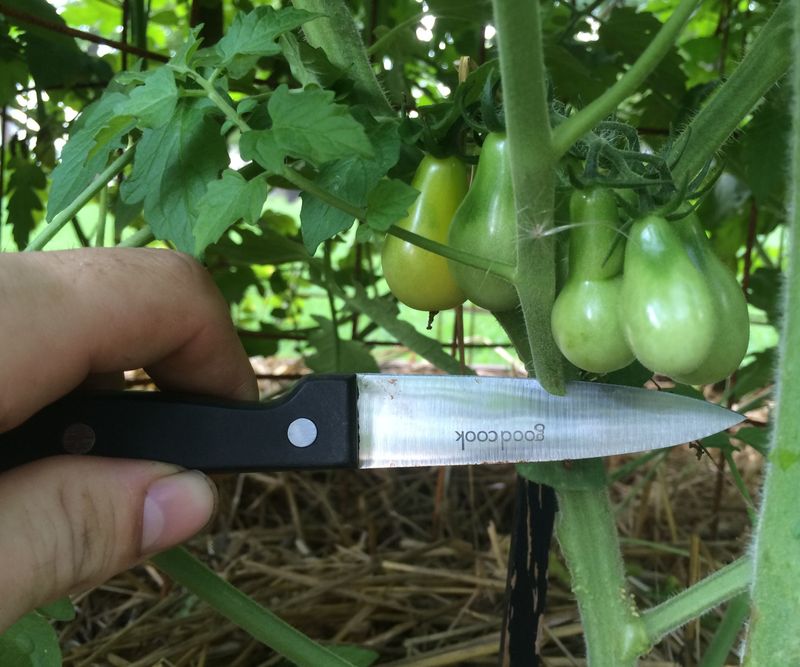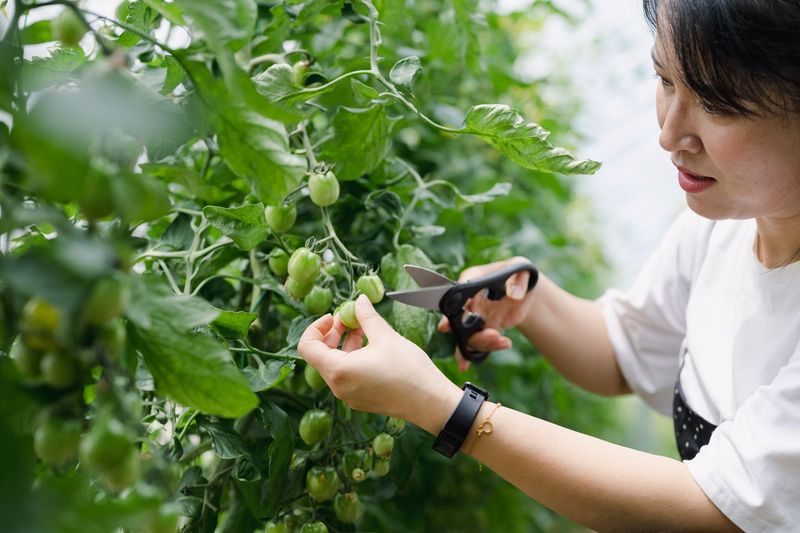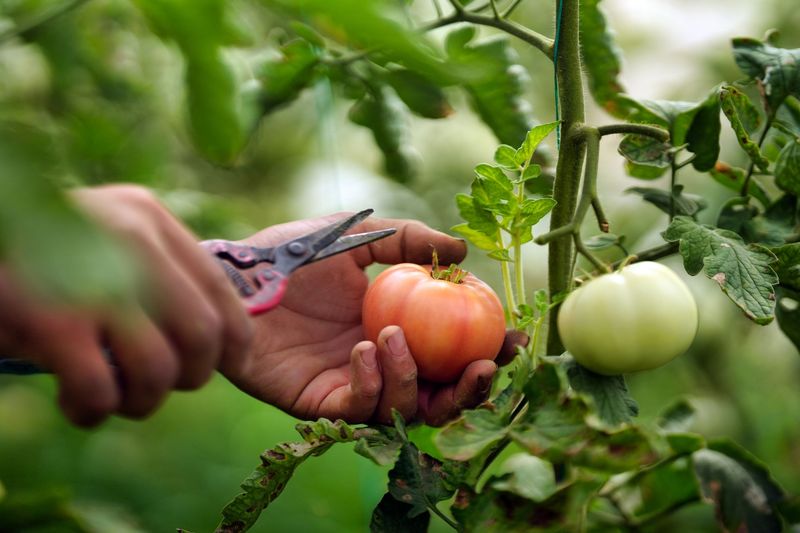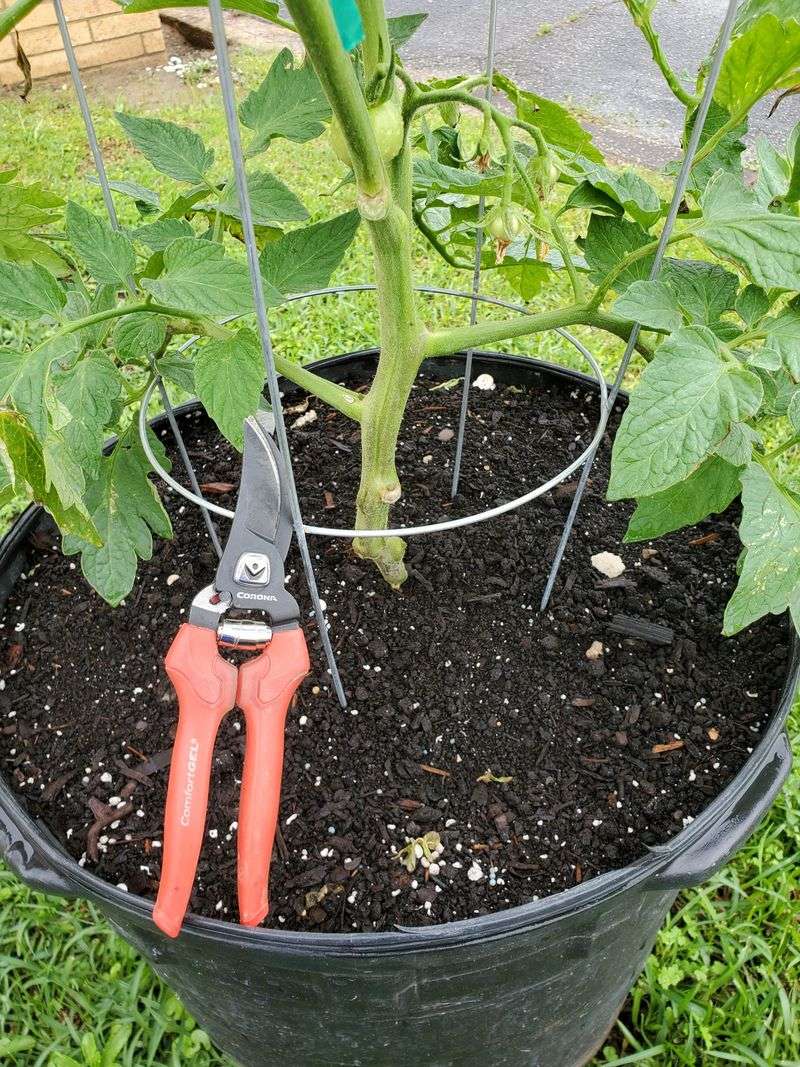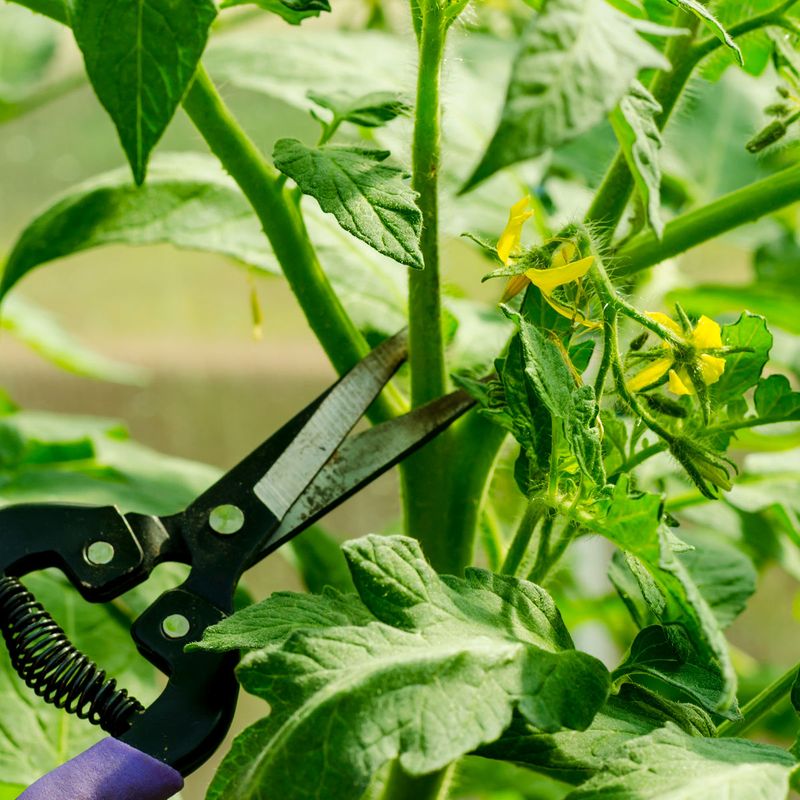Growing juicy, high-yield tomatoes requires more than just sunlight and water. The secret lies in strategic pruning. This guide provides ten essential tips to prune your tomato plants effectively.
Whether you’re a novice gardener or an experienced green thumb, these insights will help you maximize your tomato harvest.
Each tip is designed to enhance your understanding and mastery of tomato pruning, ensuring that your plants are healthy, productive, and bursting with flavor all season long.
1. Understand the Type of Tomato Plant
Tomato plants come in two main types: determinate and indeterminate. Determinate, or bush tomatoes, grow to a fixed size and require minimal pruning. They’re perfect for gardeners who prefer low-maintenance plants.
Indeterminate, or vining tomatoes, continue growing throughout the season. Pruning is crucial for these to enhance airflow and concentrate energy on fruit production. Knowing your plant type helps tailor your pruning approach effectively.
Indeterminate plants, in particular, benefit from regular trimming to avoid overcrowding and improve yield quality. This understanding sets the foundation for a fruitful tomato-growing journey.
2. Start Early
To nurture healthy tomato plants, start pruning when they reach about 12 to 18 inches in height. Early pruning helps establish strong, thick stems capable of supporting bountiful fruit loads later.
With youthful plants, removing unnecessary growth directs their energy toward developing robust root systems and sturdy frameworks. Ensuring plants are pruned in their formative stages encourages resilience against pests and diseases.
This foundational step is vital for a successful growing season, setting the stage for flourishing tomato plants that promise high yields and delicious fruits.
3. Remove Suckers Regularly
Suckers are the small shoots that emerge in the leaf axils of tomato plants. Regularly removing these helps prevent energy wastage on non-productive growth. For most gardeners, pinching suckers when they are about 2 to 4 inches long is ideal.
This practice ensures the plant’s energy is focused on producing larger, tastier fruits. By managing suckers, you reduce dense foliage, improving air circulation and sunlight penetration.
This simple yet effective technique aids in preventing fungal infections and enhances fruit quality, transforming ordinary yields into extraordinary ones.
4. Support the Plant Properly
Supporting your tomato plants is essential for healthy growth and ease of pruning. Use cages, trellises, or stakes to promote vertical growth, keeping plants organized and accessible.
Proper support not only prevents branches from breaking under the weight of heavy fruits but also facilitates better sunlight exposure and airflow. This structured approach to plant support simplifies the pruning process and ensures healthier, more productive plants.
By keeping plants off the ground, you also reduce the risk of soil-borne diseases, paving the way for a successful tomato harvest.
5. Clear the Bottom 12 Inches
Clearing the bottom 12 inches of your tomato plants is a strategic move to enhance plant health. Removing lower leaves and suckers reduces the risk of soil-borne diseases and pest infestations.
This practice improves air circulation around the base, vital for plant vigor. It also helps focus the plant’s energy on upward growth and fruit production.
By keeping this area clean and free of debris, you ensure that your tomato plants are less prone to fungal infections, leading to healthier plants and higher yields throughout the growing season.
6. Limit the Number of Main Stems
For indeterminate tomato varieties, limiting the number of main stems to just one or two is beneficial. This technique channels the plant’s energy into fewer, more robust fruiting branches, leading to bigger and better tomatoes.
By focusing the growth on select stems, gardeners ensure stronger, healthier plants that can support the weight of abundant fruit. This method also simplifies maintenance and harvesting, making it easier to manage the plant throughout the growing season.
Limiting stems is a key strategy for maximizing the quality and quantity of your tomato harvest.
7. Thin Dense Foliage
Thinning dense foliage on tomato plants is a crucial step in ensuring optimal light penetration and airflow. By removing excess leaves, especially those that block sunlight from reaching the fruits, you promote uniform ripening and reduce the risk of fungal diseases.
This practice is especially important during humid conditions where moisture can lead to blight. Lightly pruning helps maintain a balanced plant structure that supports vigorous growth and high yields.
It’s a delicate balance, but with careful attention, your tomatoes will thrive with this method.
8. Continue Throughout the Season
Pruning is not a one-time task; it requires ongoing attention throughout the growing season. Regular weekly checks and maintenance ensure your tomato plants remain manageable and productive.
By consistently removing excess growth and monitoring plant health, you avoid overgrowth that can lead to disease. This continuity in care helps sustain high yields and ensures a steady supply of ripe, flavorful tomatoes.
Consistent pruning is key to a successful harvest, making it an integral part of tomato plant care for both novice and experienced gardeners alike.
9. Use Clean, Sharp Tools
Using clean, sharp tools is vital for preventing disease spread among your tomato plants. Sterilize pruning shears with rubbing alcohol or a bleach solution before each use. Sharp blades make precise cuts, reducing damage and stress to the plant.
Clean tools prevent the transmission of pathogens that can cause plant diseases. This attention to hygiene in the garden promotes healthier plants and better crop yields.
Always prioritize cleanliness and sharpness when pruning to ensure each snip contributes positively to your tomato growing success.
10. Stop Pruning Late in the Season
As the growing season winds down, stop pruning about four weeks before the first expected frost. This practice, known as topping, halts vertical growth and redirects the plant’s energy into ripening existing fruits.
By focusing on mature fruit, you maximize the yield and quality before the cold weather sets in. This final pruning step ensures that your hard work throughout the season results in a bountiful harvest.
Understanding when to cease pruning is crucial for ending the season on a high note, filled with juicy, ripe tomatoes ready for picking.
